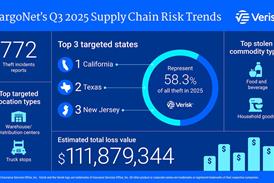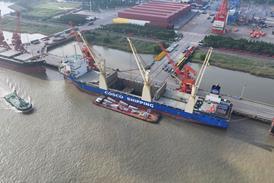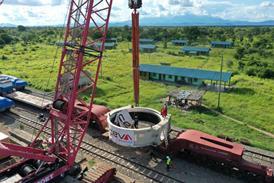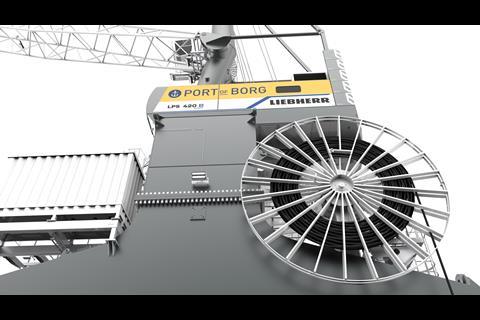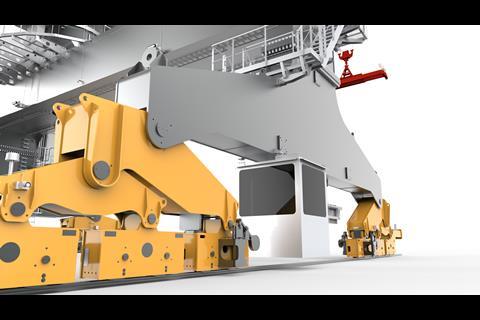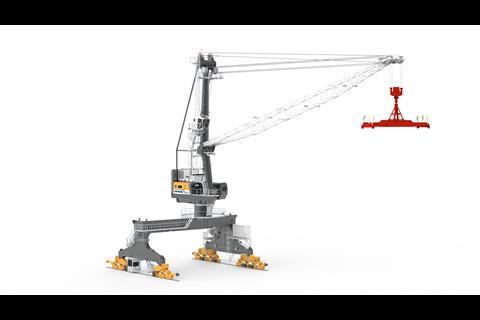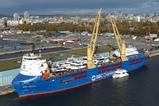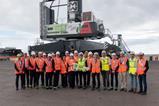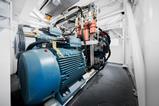As part of its investment in an electric infrastructure, Borg Havn in Norway has chosen the Liebherr LPS 420 E mobile harbour crane to help meet its climate goals while offering multipurpose cargo handling options. The fully assembled crane will be delivered by sea and mounted on the quay at Øra in Fredrikstad.

The all-electric portal slewing crane from Liebherr will be the first of its kind delivered in Norway and, with a turnover of up to 1,200 tonnes per hour, exceeds the average turnover of comparable electrically driven cranes in the market. All of the crane’s movements – such as luffing, hoisting, slewing and travelling – are made using electric motors.
The LPS 420 E can be supplied with high or low-voltage configurations, depending on the transformer requirements, which ensures that Borg Havn can fulfil its logistical operations while also reducing its environmental footprint.
The LPS 420 E crane will be used in handling containerised, bulk, general and heavy lift cargo weighing up to 124 tonnes at Borg Havn, which is the third-biggest container port in Norway with 67,249 teu moving through the gateway in 2021 - an increase of 14 percent compared with 2020.
Paving the way for reduced emissions
The contract for the new crane, which is the first Liebherr crane to be acquired by the port, was entered into in March of last year.
“This is a large investment for Borg Havn,” said port director Tore Lundestad. “Renewing and modernising our crane fleet in line with harbour activity is crucial to us. Among the main reasons for our investment in the LPS 420 E is its more environmentally friendly profile, which allows us to greatly reduce emissions and noise in the area.”

It is estimated that as much as 7 percent of greenhouse gas emissions from shipping occur while vessels are stationary in the harbour. The vessels also require electricity on board when they are docked, meaning that auxiliary engines are running to provide heat or light, or assist with loading and unloading.
The investment in shore power at Borg Havn is an important measure to cut emissions and contribute to reaching Fredrikstad’s ambitious climate goals.
Borg Havn also produces its own energy from solar cells that are connected to an internal grid. With a maximum output of 2 MW, the cells – in addition to shore power – can power all five cranes in the port on sunny days.
Based on the modern electric infrastructure at the port, the LPS 420 E is equipped with a Liebherr active-front-end frequency converter meaning that deviations in the voltage supply chain can be compensated easily for safe and stable operations.
To accommodate potentially limited space and any harsh environmental conditions, a liquid-cooled and highly efficient performance capacitor system has been implemented. This Liebherr-built component, known as LiCaTronic, has proven itself in Liebherr ship-to-shore gantry cranes and material handlers.
“We are proud to welcome to our Liebherr family such a new customer as Port of Borg. With our innovative LPS 420 E and outstanding customer service, we will support an ambitious target of Port of Borg and develop a new partnership for the future,” says Roman Chopyk, area manager for Liebherr mobile harbour cranes.
Bulk handling performance
The LPS 420 E raises the bar in terms of electrical driven bulk handling performance. With up to 30 cycles per hour, the LPS 420 E is the perfect solution when it comes to container handling performance. The crane can be fitted with various types of fixed or telescopic spreaders on a 60-tonne load chart for twin-lift container operations.

A maximum outreach of up to 48 metres allows for ships up to Panamax class size to be served. This makes the crane the ideal electrical driven solution for bulk handling, said Liebherr.
The main components of the E-drive are liquid-cooled and the heat is dissipated by heat exchangers. The fully closed liquid cooling system in combination with the heat exchanger are installed on top of the slewing platform. This means that no overpressure unit is necessary to prevent dust coming inside the machinery house, which is a big benefit for cranes working in a dusty environment.
It is this overall combination of dynamic operation and environmental benefits that has made the LPS 420 E a suitable fit for Borg Havn.


